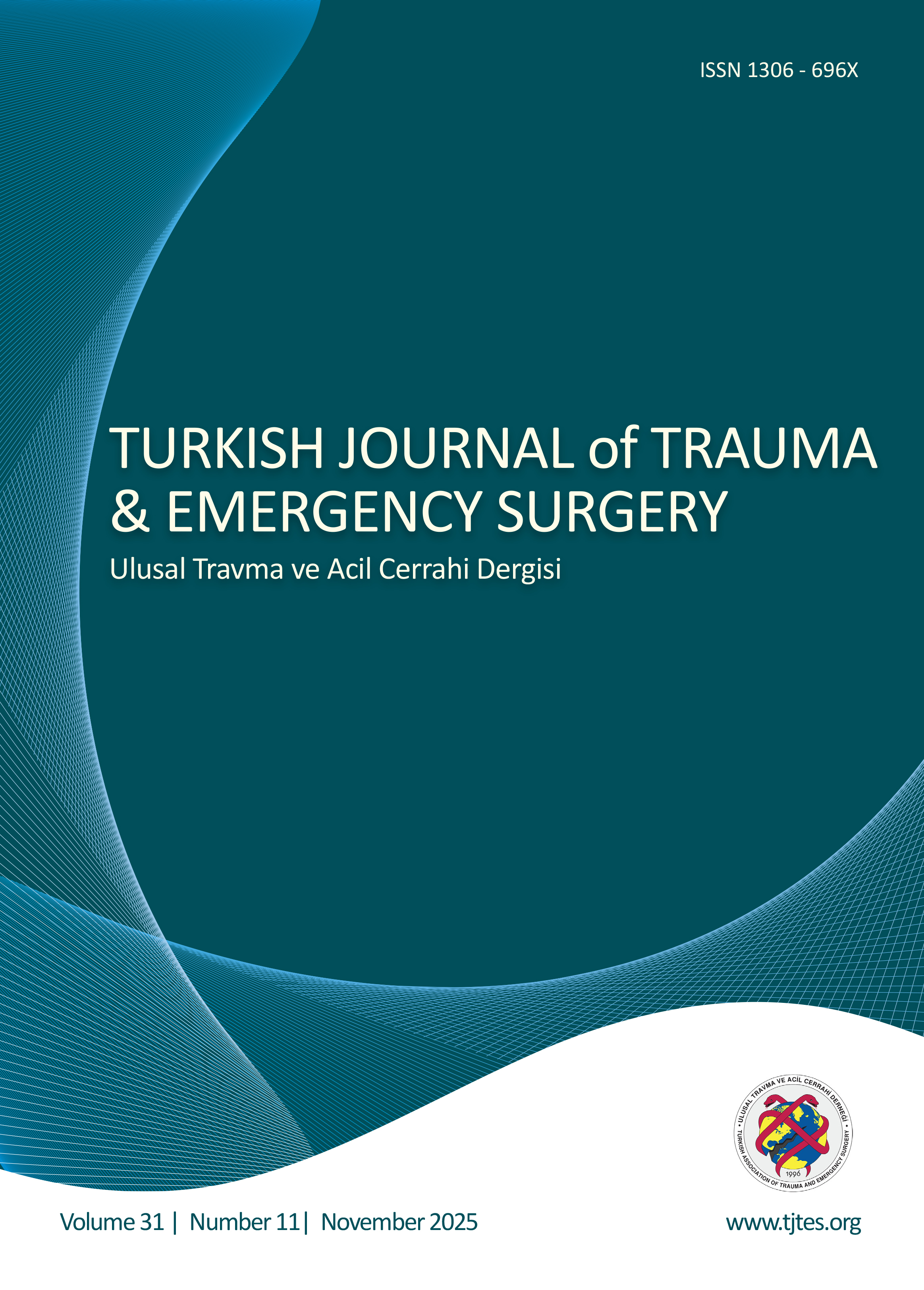Hızlı Arama
Femur üst uç kırıklarında proximal femoral nail ve proksimal femoral anatomik plak uygulanan hastaların klinik sonuçlarının karşılaştırılması, çok merkezli bir çalışma
Bünyamin Arı1, İsmail Yükünç21Kütahya Sağlık Bilimleri Üniversitesi Tıp Fakultesi, Ortopedi Ve Travmatoloji Ana Bilim Dalı, Kütahya2Haçkalı Baba Devlet Hastanesi, Trabzon
AMAÇ: Bu çalışmanın amacı, çok merkezli retrospektif tarama ile femur üst uç kırıklarının tedavisinde kullanılan proksimal femoral çivi (PFN) ve proksimal femoral anatomik plak (PFA) yöntemlerinin klinik sonuçlarını karşılaştırarak, hangi yöntemin hangi hasta grubunda daha avantajlı olduğunu belirlemektir. Çalışma, PFN ve PFA tekniklerinin etkinliğini değerlendirmek ve bu iki yöntem arasındaki farkları ortaya koyarak klinik karar verme süreçlerinde rehberlik sağlayabilecek bulgular sunmayı hedeflemektedir.
GEREÇ VE YÖNTEM: 2016-2021 yılları arasında, AO/OTA sınıflamasına göre 31A1 ve 31A2 tipinde proksimal femur kırığı olan 106 hasta retrospektif olarak incelenmiştir. Hastaların tedavisi PFN veya PFA yöntemi ile yapılmış ve klinik sonuçlar karşılaştırılmıştır. Değerlendirilen değişkenler arasında Oxford Kalça Skoru, ameliyata kadar geçen süre, operasyon süresi, hastanede yatış süresi, kanama miktarı ve takip süresi yer almıştır. İstatistiksel analizler ki-kare testi, bağımsız örneklem T-testi ve Mann-Whitney U testi ile yapılmıştır.
BULGULAR: Çalışmada, PFN ve PFA yöntemleriyle tedavi edilen hastaların klinik sonuçları karşılaştırıldığında, PFN grubu PFA grubuna kıyasla daha kısa operasyon süresi ve daha az kan kaybı ile sonuçlanmıştır. Bu fark istatistiksel olarak anlamlı bulunmuştur (p<0.05). Ayrıca, PFN yöntemi ile tedavi edilen hastaların hastanede yatış süresi de daha kısa olup, bu da istatistiksel olarak anlamlı bir fark oluşturmuştur (p<0.05). Her iki grup arasında takip süresi açısından anlamlı bir fark bulunmamıştır (p>0.05). Bununla birlikte, PFN yöntemi ile tedavi edilen hastaların Oxford Kalça Skoru, PFA grubuna kıyasla daha yüksek çıkmış, dolayısıyla PFN grubunda postoperatif fonksiyonel sonuçların daha iyi olduğu gözlenmiştir (p<0.05). Yaş ve komorbiditeler açısından yapılan analizlerde, iki grup arasında istatistiksel olarak anlamlı bir fark tespit edilmemiştir (p>0.05).
SONUÇ: PFN uygulanan hastalar, PFA uygulanan hastalara göre daha kısa cerrahi süre, daha az kan kaybı ve daha kısa hastanede kalış süresi gibi avantajlar göstermiştir. PFN'nin bu bağlamda, daha az invaziv olması ve daha hızlı iyileşme sağlaması nedeniyle klinik sonuçlar açısından daha üstün olduğu söylenebilir. Ancak takip süresi açısından anlamlı bir fark gözlenmemiştir.
Comparison of clinical outcomes of patients treated with proximal femoral nail and proximal femoral anatomic plate in upper-end fractures of the femur: A multicenter study
Bünyamin Arı1, İsmail Yükünç21Department of Orthopedics and Traumatology, Kütahya Health Sciences University Faculty of Medicine, Kütahya-Türkiye2Department of Orthopaedics and Traumatology, Haçkalı Baba Public Hospital, Trabzon-Türkiye
BACKGROUND: The aim of this study is to compare the clinical results of proximal femoral nail (PFN) and proximal femoral anatomic plate (PFA) methods used in the treatment of proximal femoral fractures through a multicenter retrospective review, and to determine which method is more advantageous for specific patient groups. The study aims to evaluate the effectiveness of PFN and PFA techniques and presents findings that can guide clinical decision-making by revealing the differences between these two methods.
METHODS: Between 2016 and 2021, 106 patients with proximal femur fractures classified as type 31A1 and 31A2 according to the AO/OTA (the Arbeitsgemeinschaft für Osteosynthesefragen/Orthopaedic Trauma Association) classification system were retrospectively examined. Patients were treated with either PFN or PFA, and the clinical results were compared. The variables evaluated included Oxford Hip Score, time to surgery, operation time, hospital stay, blood loss, and follow-up duration. Statistical analyses were performed using the chi-square test, independent-samples t-test, and Mann-Whitney U test.
RESULTS: When the clinical outcomes of patients treated with PFN and PFA were compared, the PFN group had shorter operation time and less blood loss than the PFA group, and this difference was statistically significant (p<0.05). In addition, hospital stay was shorter in the PFN group, also showing a statistically significant difference (p<0.05). No significant difference was found between the two groups regarding follow-up duration (p>0.05). However, the Oxford Hip Score was higher in the PFN group compared to the PFA group, indicating better postoperative functional results (p<0.05). Analyses by age and comorbidities showed no statistically significant differences between the groups (p>0.05).
CONCLUSION: Patients who underwent PFN had advantages such as shorter surgical time, less blood loss, and shorter hospital stay compared to patients who underwent PFA. In this context, PFN can be considered superior in terms of clinical outcomes, as it is less invasive and allows faster recovery. However, no significant difference was observed in follow-up duration.
Makale Dili: İngilizce





